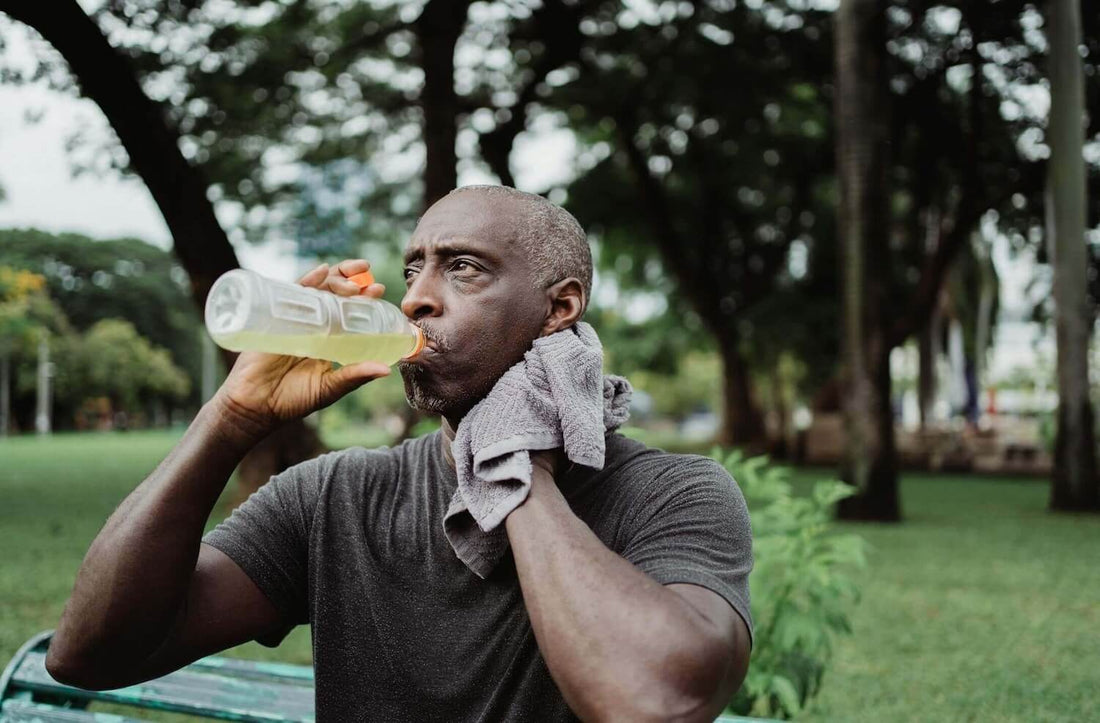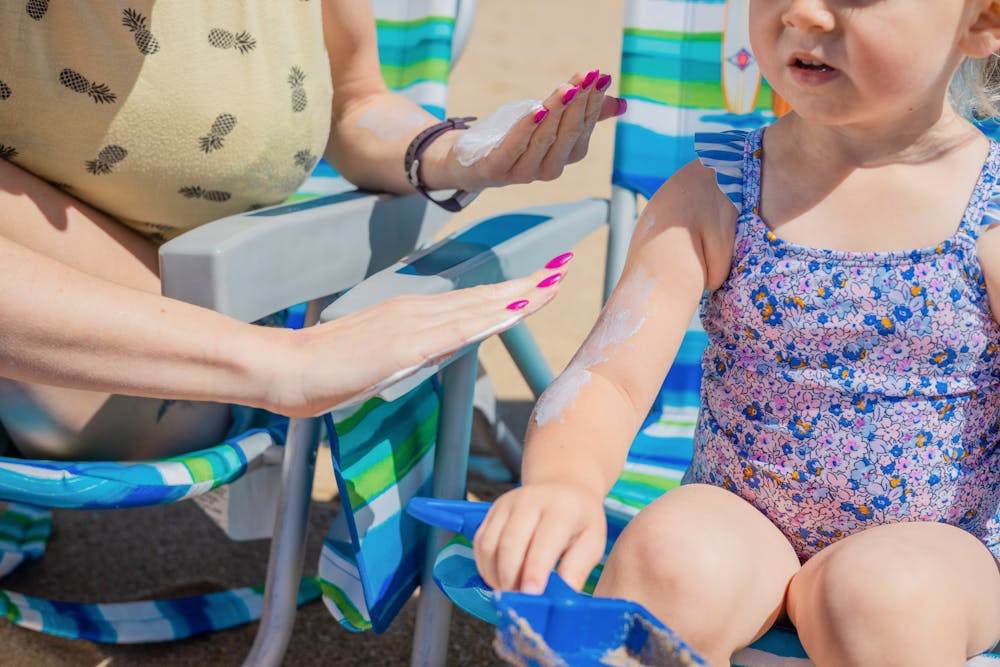When most people think about electrolytes and athletic performance, they picture sweaty athletes chugging brightly colored sports drinks. But the relationship between electrolytes and your body's performance goes far deeper than just replacing what you lose through sweat. Understanding how electrolytes truly function in your body can be the difference between hitting your peak performance and hitting a wall.
Whether you're a weekend warrior, competitive athlete, or someone who simply wants to optimize their workouts, mastering electrolyte balance is crucial for unlocking your body's full potential. Let's dive deep into the science of electrolytes and discover how proper balance can transform your athletic performance.
The Science of Electrolytes in Athletic Performance
Electrolytes are much more than just "salts" you lose when you sweat. They're electrically charged minerals that orchestrate nearly every function in your body, from muscle contractions to nerve signaling. In the context of athletic performance, they're the conductors of your body's electrical symphony.
The primary electrolytes your body relies on include sodium, potassium, magnesium, calcium, and chloride. Each plays a unique role in maintaining optimal physiological function, and when even one is out of balance, your entire system can suffer.
Understanding this intricate balance is key to optimizing your performance and recovery.
Sodium: The Master Regulator
Sodium often gets a bad reputation, but for athletes, it's absolutely essential. This electrolyte regulates fluid balance, maintains blood pressure, and enables proper muscle and nerve function. During exercise, sodium loss through sweat can be substantial, some athletes lose over 1,000mg per hour.
When sodium levels drop too low, you experience hyponatremia, which can lead to muscle cramps, fatigue, confusion, and in severe cases, dangerous swelling of the brain. This is why plain water isn't always enough during intense or prolonged exercise.
Potassium: The Cellular Powerhouse
Potassium works hand-in-hand with sodium to maintain cellular function and fluid balance. It's crucial for muscle contractions, including your heart muscle, and helps prevent muscle fatigue and cramping. Unlike sodium, potassium is primarily found inside your cells, making it harder to replace quickly when depleted.
Many athletes focus heavily on sodium replacement while neglecting potassium, which can lead to an imbalance that actually impairs performance and recovery.
Magnesium: The Metabolic Catalyst
Magnesium is involved in over 300 enzymatic reactions in your body, including energy production, protein synthesis, and muscle function. It's often called the "master mineral" because of its wide-ranging effects on athletic performance.
During intense exercise, magnesium requirements increase significantly, yet many athletes are already deficient in this crucial mineral. Even mild magnesium deficiency can impair exercise performance and increase the risk of cramps and muscle fatigue.
Calcium: Beyond Bone Health
While calcium is famous for bone health, it's equally important for muscle contractions and nerve signaling. During exercise, calcium enables your muscles to contract forcefully and helps coordinate the complex movements required for athletic performance.
Calcium also plays a role in blood clotting and enzyme activation, making it essential for recovery and adaptation to training stress.
Beyond Sweat Loss: The Hidden Electrolyte Demands
Most athletes understand that sweating depletes electrolytes, but there are several other ways your body loses these crucial minerals during exercise and training.
The metabolic demands of exercise itself consume electrolytes at an accelerated rate. Energy production, muscle contractions, and cellular repair all require adequate electrolyte availability. This means that even activities that don't produce significant sweat can still deplete your electrolyte stores.
Respiratory Losses
During intense exercise, increased breathing rate leads to additional electrolyte losses through your respiratory system. This is particularly significant during cold weather exercise or high-altitude training, where you might not notice significant sweating but are still losing electrolytes.
Cellular Utilization
Your muscles and organs actively consume electrolytes during exercise for energy production and cellular function. This internal usage can be substantial, especially during prolonged or high-intensity activities.
Stress Response
The physical stress of exercise triggers hormonal responses that can affect electrolyte balance. Cortisol, adrenaline, and other stress hormones influence how your body handles and retains electrolytes.
The Performance Impact of Electrolyte Imbalance
When your electrolyte balance is off, the effects on performance can be dramatic and wide-ranging. Understanding these impacts can help you recognize when you need to adjust your electrolyte strategy.
Poor electrolyte balance doesn't just affect your current workout, it can impact your recovery, sleep quality, and subsequent training sessions.
Muscle Function and Cramping
Electrolyte imbalances are a primary cause of muscle cramps and fatigue. When sodium and potassium ratios are disrupted, your muscles can't contract and relax properly, leading to painful cramping and reduced power output.
Cognitive Performance
Your brain is incredibly sensitive to electrolyte balance. Even mild dehydration and electrolyte depletion can impair concentration, decision-making, and reaction time, all crucial for athletic performance.
Cardiovascular Efficiency
Electrolytes directly affect your cardiovascular system's ability to pump blood and deliver oxygen to working muscles. Poor electrolyte balance can lead to increased heart rate, reduced cardiac output, and decreased endurance capacity.
Recovery and Adaptation
Proper electrolyte balance is essential for post-exercise recovery. Without adequate electrolytes, your body struggles to repair muscle tissue, replenish energy stores, and adapt to training stress.
Strategic Electrolyte Replacement for Athletes
Effective electrolyte replacement goes beyond grabbing the nearest sports drink. It requires understanding your individual needs, the demands of your sport, and the quality of your electrolyte sources.
The key is finding clean, effective electrolyte products that support your performance without unnecessary additives or artificial ingredients.
Timing Your Electrolyte Intake
Pre-exercise electrolyte loading can help ensure you start with optimal levels, especially for longer training sessions or competitions. During exercise, regular small amounts are more effective than large doses, which can cause gastrointestinal distress.
Post-exercise electrolyte replacement is crucial for recovery and preparing for your next training session.
Quality Matters
Not all electrolyte products are created equal. Many commercial sports drinks contain artificial colors, flavors, and excessive sugar that can actually impair performance and health. Clean electrolyte products like Purishh's Lemon-Lime Electrolytes provide essential minerals without unnecessary additives.
Individual Needs Assessment
Your electrolyte needs are unique to you, your sport, training intensity, climate, and even your genetics. Some athletes are "heavy sweaters" who lose more sodium, while others may be more prone to magnesium depletion.
Consider factors like sweat rate, training duration, environmental conditions, and your baseline diet when developing your electrolyte strategy.
Natural vs. Synthetic Electrolyte Sources
The source of your electrolytes can significantly impact their effectiveness and how your body responds to them. Understanding the difference between natural and synthetic sources can help you make better choices for your performance and health.
Natural electrolyte sources are often better absorbed and utilized by your body compared to synthetic alternatives.
Absorption and Bioavailability
Natural electrolyte sources, particularly those derived from whole food sources, are often more bioavailable than synthetic versions. This means your body can absorb and use them more efficiently, leading to better performance benefits.
Cofactor Benefits
Natural electrolyte sources often come with beneficial cofactors, additional nutrients that support the absorption and utilization of the primary minerals. These cofactors can enhance the overall effectiveness of your electrolyte supplementation.
Avoiding Unnecessary Additives
Clean, natural electrolyte products avoid artificial colors, flavors, and preservatives that can cause gastrointestinal distress or other negative effects. Products like Purishh's Raspberry Electrolytes focus on providing what your body needs without unnecessary additives.
Personalized Electrolyte Strategies for Different Sports
Different sports place varying demands on your electrolyte system, and your replacement strategy should reflect these differences. Understanding the specific needs of your sport can help you optimize your electrolyte approach.
Endurance sports, strength training, and team sports each have unique electrolyte requirements that should be addressed accordingly.
Endurance Sports
Long-duration activities like running, cycling, and swimming create substantial electrolyte losses through both sweat and metabolic demands. Endurance athletes need consistent electrolyte replacement throughout their activity, with particular attention to sodium and potassium balance.
Strength and Power Sports
While strength training may not produce as much sweat, the intense muscular contractions place high demands on calcium and magnesium. These athletes benefit from pre-training electrolyte loading and post-training replacement.
Team Sports
Sports with intermittent high-intensity efforts require flexible electrolyte strategies that can adapt to varying demands throughout the game or practice. Focus on maintaining baseline levels with strategic replacement during breaks.
Common Electrolyte Mistakes Athletes Make
Even well-intentioned athletes often make critical errors in their electrolyte strategy that can hurt their performance and recovery. Recognizing these common mistakes can help you avoid them.
Learning from these mistakes can dramatically improve your athletic performance and overall health.
Over-Relying on Thirst
By the time you feel thirsty, you're already behind on hydration and electrolyte replacement. Thirst is a late indicator of fluid needs, and relying on it can lead to performance decrements.
Ignoring Individual Needs
Using a one-size-fits-all approach to electrolyte replacement ignores the significant individual variations in electrolyte needs. Your requirements may be very different from your training partners.
Focusing Only on Sodium
While sodium is important, neglecting other electrolytes like potassium and magnesium can create imbalances that actually impair performance. A comprehensive approach addresses all major electrolytes.
Using Poor-Quality Products
Cheap electrolyte products often contain artificial additives, excessive sugar, or poorly absorbed forms of minerals that can cause more harm than good.
The Role of Whole Foods in Electrolyte Balance
While supplements play an important role, whole foods should form the foundation of your electrolyte strategy. Many natural foods are excellent sources of electrolytes and provide additional nutritional benefits.
Combining whole food sources with clean supplementation creates the most effective electrolyte strategy for athletes.
Potassium-Rich Foods
Bananas, potatoes, spinach, and avocados are excellent sources of potassium that can support your electrolyte balance naturally.
Magnesium Sources
Dark leafy greens, nuts, seeds, and quality dark chocolate provide bioavailable magnesium that supports muscle function and recovery.
Natural Sodium Sources
High-quality sea salt, bone broth, and certain vegetables can provide sodium in a more natural form than processed foods.
Optimizing Recovery Through Electrolyte Balance
Post-exercise electrolyte replacement is crucial for recovery and preparing for your next training session. The window immediately after exercise is when your body is most receptive to electrolyte replacement.
Proper recovery nutrition should address both macronutrient and electrolyte needs simultaneously.
The Recovery Window
Your body's ability to absorb and utilize electrolytes is enhanced immediately after exercise. Taking advantage of this window can accelerate recovery and improve subsequent performance.
Combining with Protein
Pairing electrolyte replacement with high-quality protein, like Purishh's clean protein powder, creates a powerful recovery combination that addresses multiple physiological needs.
Sleep and Electrolytes
Proper electrolyte balance supports quality sleep, which is when most recovery and adaptation occurs. Magnesium, in particular, plays a crucial role in sleep quality and muscle recovery.
The Bottom Line: Electrolytes as Performance Fuel
Understanding electrolytes as more than just sweat replacement transforms how you approach athletic performance. These essential minerals are the foundation of every physiological process that determines your ability to perform, recover, and adapt to training stress.
By taking a comprehensive approach to electrolyte balance, one that considers individual needs, sport-specific demands, and the quality of your electrolyte sources, you can unlock new levels of performance and recovery. Choose clean, effective products that support your goals without unnecessary additives, and remember that optimal electrolyte balance is about much more than just what you lose through sweat.
Your body is an incredibly sophisticated machine, and electrolytes are the spark plugs that keep it running at peak performance. Give your body the high-quality fuel it deserves, and experience the difference that proper electrolyte balance can make in your athletic journey.




